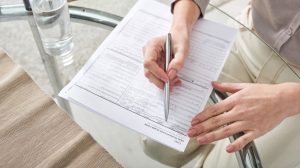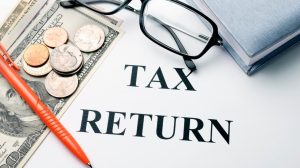Claiming back mileage from HMRC is a smart way to ensure that you’re getting compensated for the cost of using your personal vehicle for business travel.
Many employees and self-employed individuals overlook this opportunity, missing out on valuable tax relief. If you’re driving for work purposes and not being fully reimbursed by your employer, you could be entitled to claim mileage relief.
In this detailed guide, we’ll walk you through the process of how to claim back mileage from HMRC, from eligibility requirements to submitting your claim.
What Is HMRC Mileage Allowance Relief?

HMRC Mileage Allowance Relief (MAR) is a tax relief that enables employees and self-employed individuals to claim back money for using their personal vehicles for business-related travel.
This relief compensates individuals who are not fully reimbursed by their employer for the cost of fuel, maintenance, and general wear and tear on their car.
Business mileage refers to any driving you do solely for work purposes, such as attending meetings, visiting clients, or going to temporary workplaces.
However, it’s important to note that driving from home to your regular workplace does not count as business mileage.
Key Points to Remember:
- Business mileage does not include commuting from home to a permanent workplace.
- Mileage Allowance Relief can be claimed on personal cars, vans, motorcycles, and bicycles.
- The relief is calculated based on HMRC’s Approved Mileage Allowance Payments (AMAP), which cover fuel, repairs, and other car-related expenses.
Can I Claim Back Mileage from HMRC for Work-Related Travel?
Yes, you can claim back mileage for work-related travel if you use your personal vehicle for business purposes. However, there are conditions to meet before you can make a claim.
If your employer reimburses you below the HMRC-approved mileage rates, you are eligible to claim the difference as tax relief.
For example, if your employer pays you 30p per mile and the HMRC-approved rate is 45p per mile for the first 10,000 miles, you can claim 15p per mile for tax relief.
What Qualifies as Work-Related Travel?
- Traveling to meet clients or customers.
- Driving to temporary workplaces.
- Running errands for work or attending conferences.
- Traveling between different work sites, but not your regular commute.
How to Calculate My HMRC Mileage Claim?

Calculating your HMRC mileage claim is straightforward as long as you know the current mileage rates and have accurate records of the miles you’ve driven. Here’s how you can calculate it:
- Check the Mileage Rates: As of 2023, HMRC’s mileage rates are:
- 45p per mile for the first 10,000 miles in a tax year.
- 25p per mile for additional miles over 10,000.
- 24p per mile for motorcycles.
- 20p per mile for bicycles.
- Track Your Mileage: Keep a detailed log of your business mileage, including the date, destination, and reason for each trip. This is crucial as HMRC may ask for proof if they audit your claim.
- Subtract Employer Reimbursement: If your employer reimburses you less than the HMRC-approved rates, calculate the difference you can claim as tax relief.
Example Calculation:
- If you drove 8,000 miles for work and were reimbursed 30p per mile, you can claim the remaining 15p per mile.
- 8,000 miles x 15p = £1,200 tax relief claim.
Using HMRC’s Mileage Claim Calculator can also make the process easier. This online tool helps you determine how much mileage relief you’re entitled to claim based on your specific situation.
What Are the Current HMRC Mileage Rates?
HMRC provides standard rates for business mileage, which are intended to cover the cost of fuel, wear and tear, and other running expenses for your personal vehicle. The rates vary depending on the type of vehicle you use:
HMRC Mileage Rates for Cars and Vans:
- 45p per mile for the first 10,000 miles in a tax year.
- 25p per mile for additional miles over 10,000.
HMRC Mileage Rates for Motorcycles:
- 24p per mile, regardless of the distance.
HMRC Mileage Rates for Bicycles:
- 20p per mile, regardless of the distance.
These rates apply whether you’re driving a petrol, diesel, hybrid, or electric vehicle. It’s important to note that if your employer reimburses you at a higher rate than the HMRC-approved rates, the excess will be considered taxable income.
How to Submit a Mileage Claim to HMRC?

Submitting a mileage claim to HMRC is relatively simple, but the process differs depending on whether you are employed or self-employed. Here’s a breakdown of both scenarios:
If You’re Employed:
- Use the P87 Form: Employees who are not self-assessed can submit a P87 form to claim mileage allowance relief. This form can be filled out online or by post.
- Details Required: You will need to provide details about your work-related travel, including:
- The miles driven.
- The amount reimbursed by your employer.
- The total amount of mileage allowance you’re claiming.
- Submit Online or by Post: You can submit your P87 claim through your HMRC Personal Tax Account online or send it by post to HMRC.
If You’re Self-Employed:
- Claim on Self-Assessment: For self-employed individuals, mileage claims are submitted through the annual Self-Assessment tax return.
- Mileage Records: Include all your business mileage and subtract any reimbursements or payments received.
- Enter Mileage on Your Tax Return: When completing your Self-Assessment, enter the total mileage relief you’re claiming in the appropriate section of the form.
Who Is Eligible for HMRC Mileage Relief?
Mileage relief is available to both employees and self-employed individuals, but eligibility depends on how and why you use your personal vehicle for work.
Here’s a breakdown of the different types of people who can claim:
Eligible Groups:
- Employees: If you use your personal car for work purposes and receive less than the approved mileage rates from your employer, you can claim mileage relief.
- Self-Employed: If you drive your own vehicle for business, you can claim mileage as part of your business expenses.
- Part-Time Workers: Employees who use their vehicle part-time for work may also claim relief, provided the travel qualifies as business-related.
Ineligible Groups:
- Commuters: Travel between your home and your permanent workplace is considered a personal commute and is not eligible for mileage relief.
- Fully Reimbursed Employees: If your employer reimburses you at or above HMRC’s mileage rates, you cannot claim additional tax relief.
How to Claim Mileage Allowance Relief on a Self-Assessment Tax Return?

Claiming mileage allowance relief through your Self-Assessment tax return is an essential process for the self-employed and those who are already self-assessed. Here’s how you can do it:
- Log in to Your HMRC Account: Start by logging into your HMRC online account, where you complete your Self-Assessment tax return.
- Locate the Expenses Section: Under the expenses section, you’ll find a section for business travel and subsistence expenses. Enter your total business mileage there.
- Use Approved Mileage Rates: Ensure you are using the correct mileage rates (45p per mile for the first 10,000 miles and 25p thereafter). If you claim any other car expenses (e.g., fuel or insurance), you cannot claim mileage allowance.
- Record Keeping: HMRC may ask for proof of mileage, so keep detailed records, including dates, mileage, and purposes of your trips.
Can I Claim Travel Expenses from Home to Work in the UK?
In most cases, travel from home to your regular place of work is regarded by HMRC as commuting, which is considered a personal expense and is not eligible for tax relief.
This applies whether you drive your own car, take public transport, or cycle to work. However, there are specific exceptions to this rule, allowing you to claim mileage relief in certain circumstances.
Exceptions to the Rule:
- Temporary Workplaces: If you are required to work at a temporary location for a short period (defined as less than 24 months), you can claim tax relief for the travel expenses. This might apply if your employer sends you to a new office, construction site, or client’s location for a limited time.
- Travel Between Work Sites: If your job requires you to travel between different work locations during the day, the mileage for these trips can be claimed. For example, if you work at two different branches or visit multiple clients during the day, the travel between these sites is considered business mileage.
HMRC defines a temporary workplace as a location where you work for less than 24 months. If you visit the same site for longer than 24 months, it is considered a permanent workplace, and you can no longer claim mileage relief for that travel.
What Is the P87 Form, and How Do I Use It for a Mileage Claim?

The P87 form is an essential document for employees who want to claim mileage tax relief but are not required to file a Self-Assessment tax return.
This form is used to apply for tax relief on expenses related to business travel, including mileage. If your employer reimburses you less than HMRC’s approved mileage rates, you can use the P87 form to claim the difference as tax relief.
Here’s how you can use the P87 form:
Step 1: Download or Submit the Online
The P87 form can be easily downloaded from HMRC’s official website, or you can complete and submit it online through your HMRC Personal Tax Account. Submitting online is generally faster, and it allows you to track the status of your claim.
Step 2: Provide Mileage Details
You’ll need to input key information, including the total number of business miles you’ve driven, the amount reimbursed by your employer, and the total sum you’re claiming for tax relief. It’s important to keep detailed records of your mileage to ensure accuracy.
Step – 3: Submit the Form
Once completed, the form can be submitted online or by post. Online submission through your Personal Tax Account is recommended for faster processing. If submitting it by post, send the form to HMRC at the address provided in the P87 document.
Once submitted, HMRC will review your claim, and if approved, you will receive your tax relief either via an adjustment in your tax code or as a refund.
What Are the Common Mistakes to Avoid When Claiming Mileage from HMRC?

Claiming mileage from HMRC can be straightforward, but there are several common mistakes that could delay or reduce your tax relief:
- Incorrect Mileage Records: Failing to keep accurate mileage records is one of the most common mistakes. HMRC may require detailed logs of your business trips, including dates, destinations, and the reason for travel. Without these, your claim could be rejected.
- Claiming for Commuting: Remember that commuting between your home and your regular workplace is not eligible for mileage relief. Only business-related travel qualifies, such as visiting clients or travelling between work sites.
- Overclaiming Mileage: Ensure you claim the correct mileage rates, 45p per mile for the first 10,000 miles and 25p thereafter. Claiming more than the HMRC-approved rates could result in penalties.
- Not Subtracting Employer Reimbursement: If your employer reimburses you for mileage, you must subtract this amount from your claim. You can only claim the difference between what HMRC allows and what you’ve been refunded.
- Forgetting to File on Time: Late claims may be rejected, so ensure you submit your mileage relief claim within the correct tax year. You can claim for up to four previous tax years, but waiting too long could cause delays.
- Failing to Keep Fuel Receipts: Although you are claiming mileage allowance and not specific fuel costs, keeping receipts helps substantiate your overall mileage claim in case of an audit.
Conclusion
Claiming back mileage from HMRC can save you significant money, whether you’re an employee using your personal car for work purposes or a self-employed individual looking to reduce your tax burden.
Understanding the mileage relief system and keeping accurate records are essential steps in ensuring your claim is successful. By following the guidelines in this blog, you can confidently navigate the process, calculate your mileage correctly, and avoid common mistakes that many people make.
From knowing the eligibility rules to calculating mileage using the correct HMRC rates, claiming mileage relief has never been easier.
If you’re not sure whether you’re getting the full benefit, don’t hesitate to review your past travel and submit a claim today. After all, those miles add up, and every penny counts when it comes to tax relief!
FAQs About Mileage from HMRC
Is there a limit to the mileage I can claim from HMRC?
No, there is no set limit on the number of miles you can claim. However, the rates differ after the first 10,000 miles in a tax year (45p for the first 10,000 miles, 25p thereafter). Make sure to use the correct rate for your calculations.
What happens if I use a company car for business travel?
If you use a company car for business travel, you cannot claim mileage relief. Instead, you’ll follow HMRC’s guidelines for company car fuel reimbursements.
Can I claim mileage relief if I’m self-employed?
Yes, if you’re self-employed, you can claim mileage relief as part of your business expenses. Be sure to track your business miles accurately and include the total on your Self-Assessment tax return.
How long does it take to process an HMRC mileage claim?
HMRC typically processes mileage claims within four to six weeks. However, this can vary depending on the method of submission and the complexity of your claim.
What types of travel expenses can be claimed with mileage relief?
You can claim for business-related travel, which includes visiting clients, travelling between work sites, or attending work-related meetings. Regular commuting from home to a permanent workplace is not eligible.
Can I claim back mileage for past years?
Yes, you can claim mileage relief for up to four previous tax years. Be sure to have detailed records of your travel for those years, including the miles driven and the reasons for each trip.
Do I need to provide receipts for fuel when claiming mileage?
While you don’t need to provide fuel receipts specifically for claiming mileage relief, keeping them can help substantiate your claim in case HMRC requests additional documentation.





